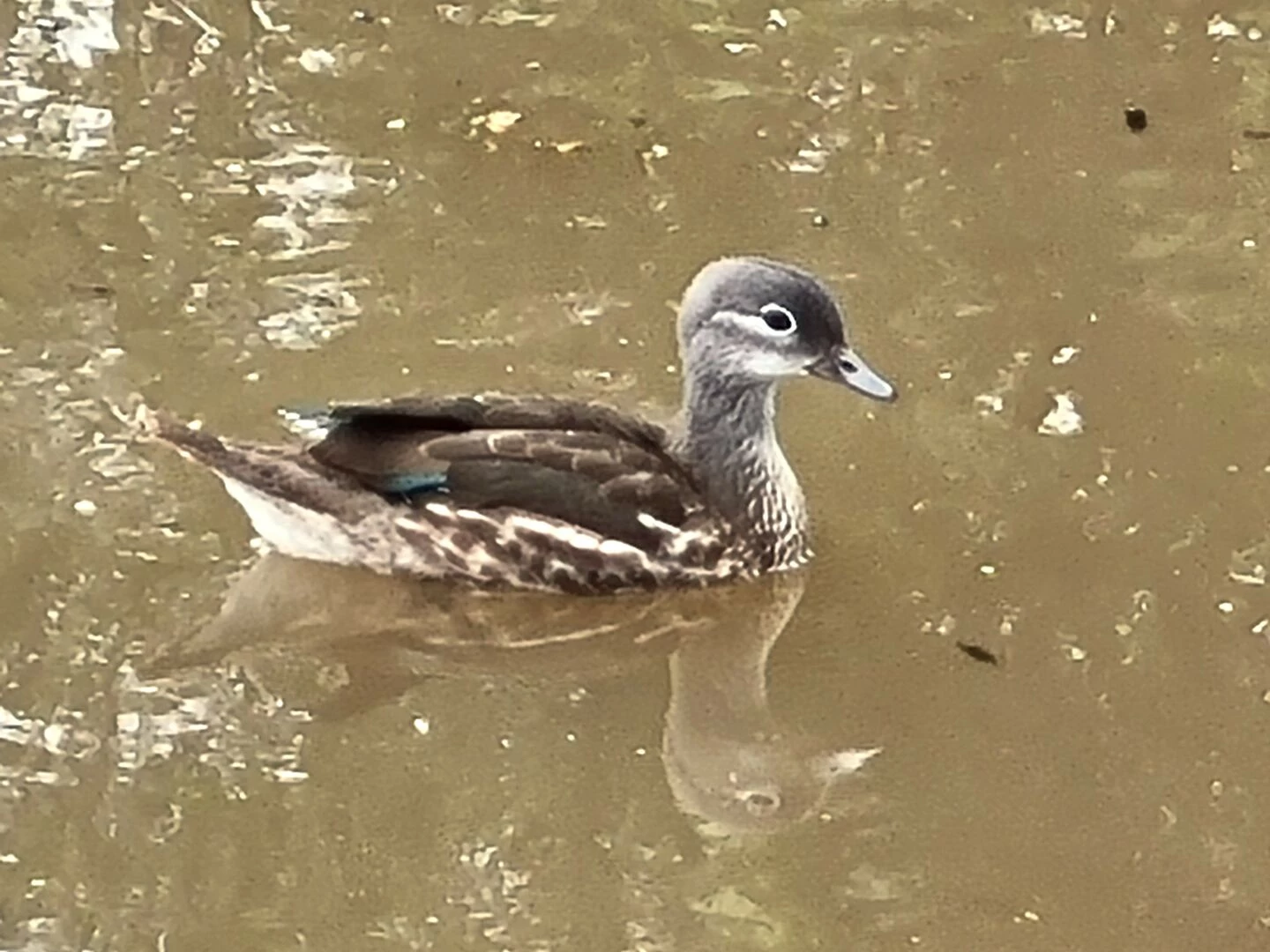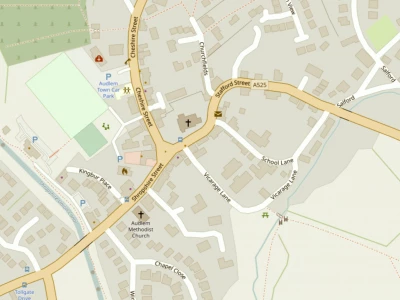
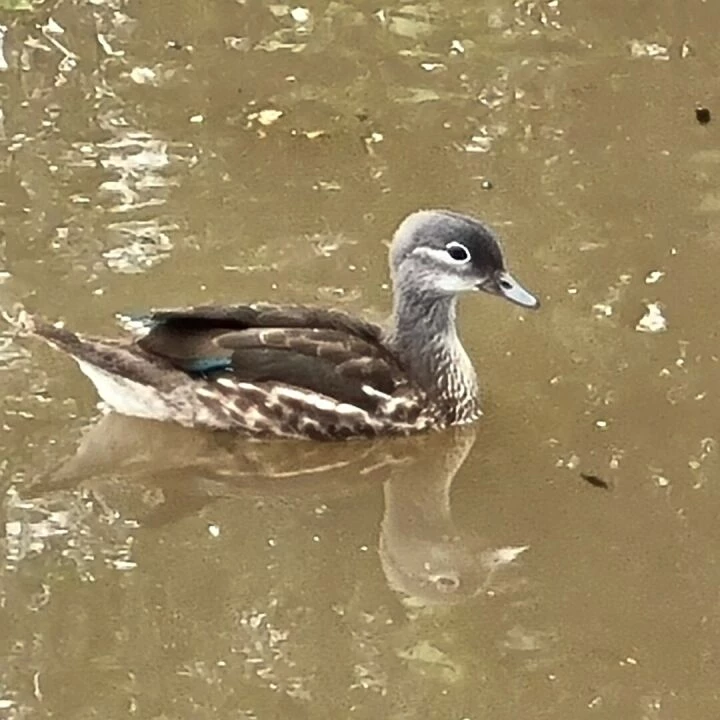



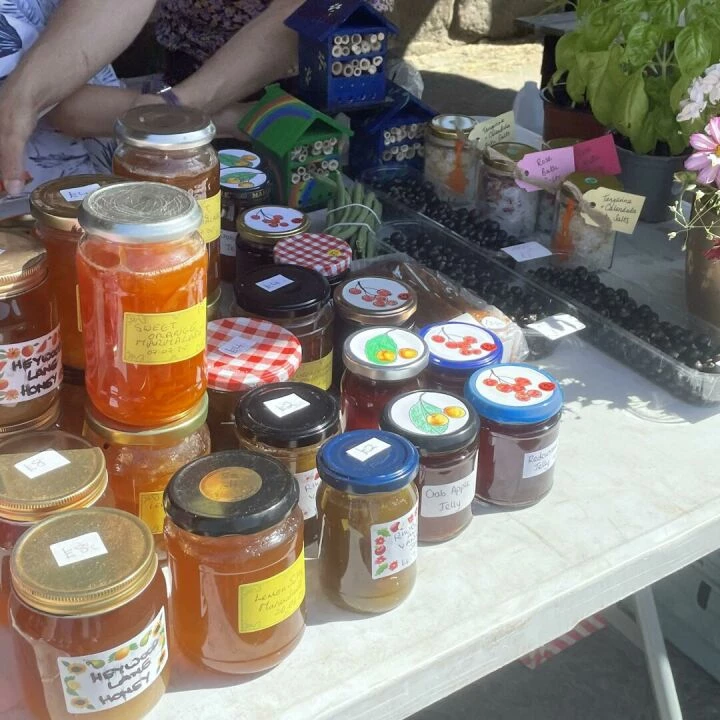


Sometimes a walk along the canal reveals a surprise. So it did for me on a cloudy but pleasant walking weather afternoon recently. . As well as the ever changing display of wild flowers, occasionally a newcomer makes an appearance. So flopping sounds drew my attention to a group of young ducks frolicking in the water. But one caught my eye and was good enough to swim quite close to me. Checking with my bird identifier, I realised it was not a ubiquitous Mallard but a female Mandarin duck, The female duck is not so brightly coloured as the male, nevertheless distinctive, in shape and colouring.
But where did "Mandy" come from? Although common on wetland reserves like Martin Mere , Mandarin Duck are not commonly found in the wild setting. She did not seem to be with a mate , so what made her hitch up with a gang of rowdy adolescent Mallards? I have seen it before that when a lone bird finds itself out of its usual managed environment that it tags along with a group of wild birds. I spotted this some years ago with an Orinoco Goose among Canada Geese and Greylag Geese on the fields below Moss Hall Fam. There seems to be the need for company and the safety that a group may provide. Mandarin Duck are native to Asian countries where they have a rich cultural significance. As pairs generally stay together and have large broods they are considered icons of fidelity and abundance. The striking decoration of the male is seen in Chinese and Japanese art. So why was Mandy alone? The mystery of Mandy remains, but her presence is a welcome surprise on a cloudy afternoon.
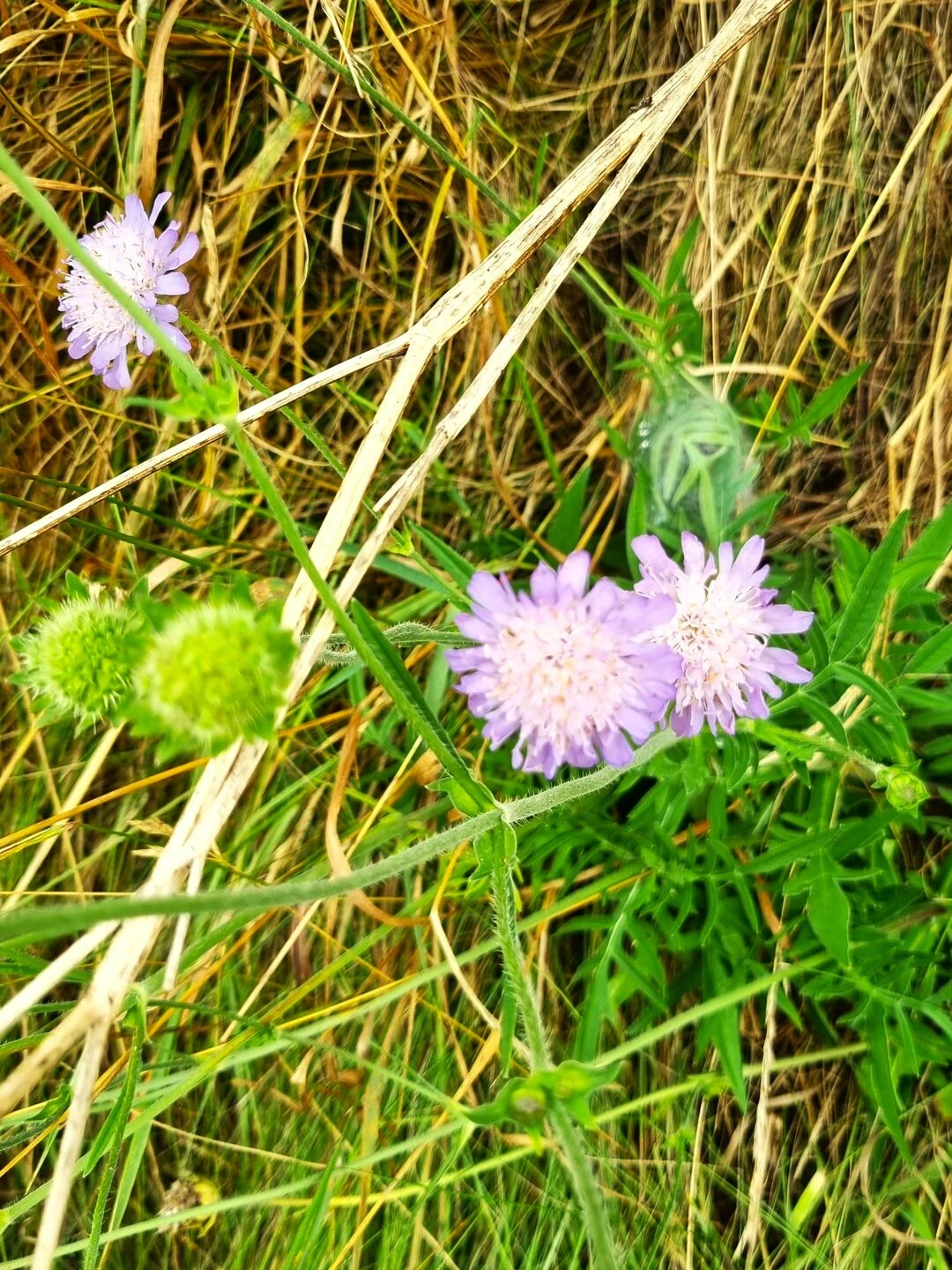
Another new sighting noted for our survey records of the canal towpath was also added the same day. It was a patch of Field Scabius plants. Although fairly common throughout the country on verges and rough grassy places, this was a first for the canal towpath. It has an interesting past. Its name is taken from the Greek word meaning "to scratch". It was used in the treatment of skin ailments in particular, Scabies and Bubonic plague. It is a particular food source for the Marsh Fritillary Butterfly and the Bee Hawk Moth. Whence it came to be growing on the towpath edge is another of those mysteries with which the world around continues to surprise and delight us.
Adrian Leighton
Get In Touch
AudlemOnline is powered by our active community.
Please send us your news and views using the button below:
Email: editor@audlem.org

